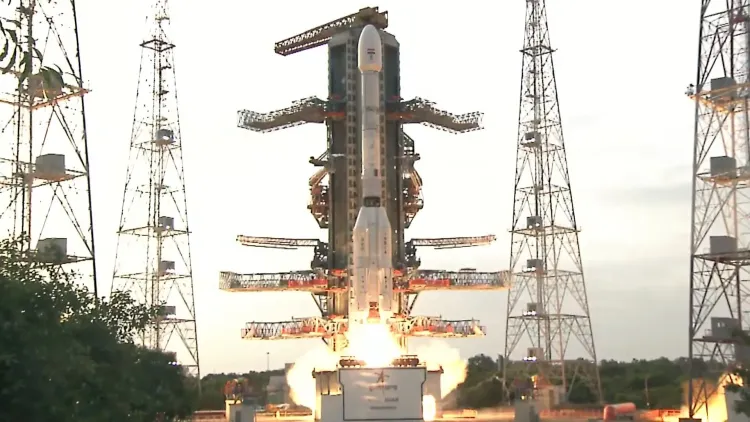How Did Simplex Permanent Magnet Stepper Motors Propel the NISAR Mission into Space?

Synopsis
Key Takeaways
- Simplex Permanent Magnet Stepper Motors are vital for controlling fuel mixtures in rockets.
- The NISAR mission enhances global climate monitoring capabilities.
- SonaSPEED has a long-standing partnership with ISRO, providing critical components for various missions.
- Precision control in motors is essential for stable rocket launches.
- The success of Chandrayaan-3 showcases India's advancements in space technology.
Bengaluru, Aug 1 (NationPress) As the GSLV-F16 rocket ascended from the Satish Dhawan Space Centre in Sriharikota, researchers celebrated the successful operation of the Simplex Permanent Magnet Stepper Motors, which played a pivotal role in powering the inaugural ISRO-NASA Earth Observation Mission.
The Simplex Permanent Magnet Stepper Motors, integrated into the NISAR mission rocket developed at the SonaSPEED laboratory in Bengaluru, utilize technology created by experts at Sona College of Technology's Sona Special Power Electronics and Electric Drives (SonaSPEED) division in Salem, according to a statement released by the institution on Friday.
This motor is essential for managing the fuel-mixture ratio within the actuator assembly of the GSLV-F16, which combines liquid hydrogen and oxygen to ignite the cryogenic engine during the rocket's final stage. Accurate management of the liquid fuel and oxidizer mixture is vital for dependable engine operation throughout the ascent.
This straightforward yet advanced Simplex Permanent Magnet Stepper Motor is critical for the mission; during the high-pressure launch sequence, its precise position control is necessary for stable combustion and trajectory accuracy—key elements for the successful deployment of the NISAR payload.
The NASA–ISRO Synthetic Aperture Radar (NISAR) mission marks a significant advancement in global climate and disaster observation, boasting all-weather, day-and-night imaging capabilities.
The institute mentioned that SonaSPEED motors have previously supported other GSLV launch missions, including India’s lunar mission, Chandrayaan-3. The SonaSPEED facility located on the outskirts of Bengaluru produces vital components for aerospace and extraterrestrial applications.
For nearly twenty years, the institute has been a reliable technology partner for ISRO, supplying space-grade electrical machines such as Permanent Magnet Stepper Motors, BLDC motors, and reaction wheels for earlier missions, including Chandrayaan-2, Chandrayaan-3, and the RLV landing trial.
It is worth noting that the Simplex Permanent Magnet Stepper Motors played a crucial role in the LVM3 actuator assembly for the Chandrayaan-3 mission, which accomplished India’s historic first lunar south pole landing in August 2023.









